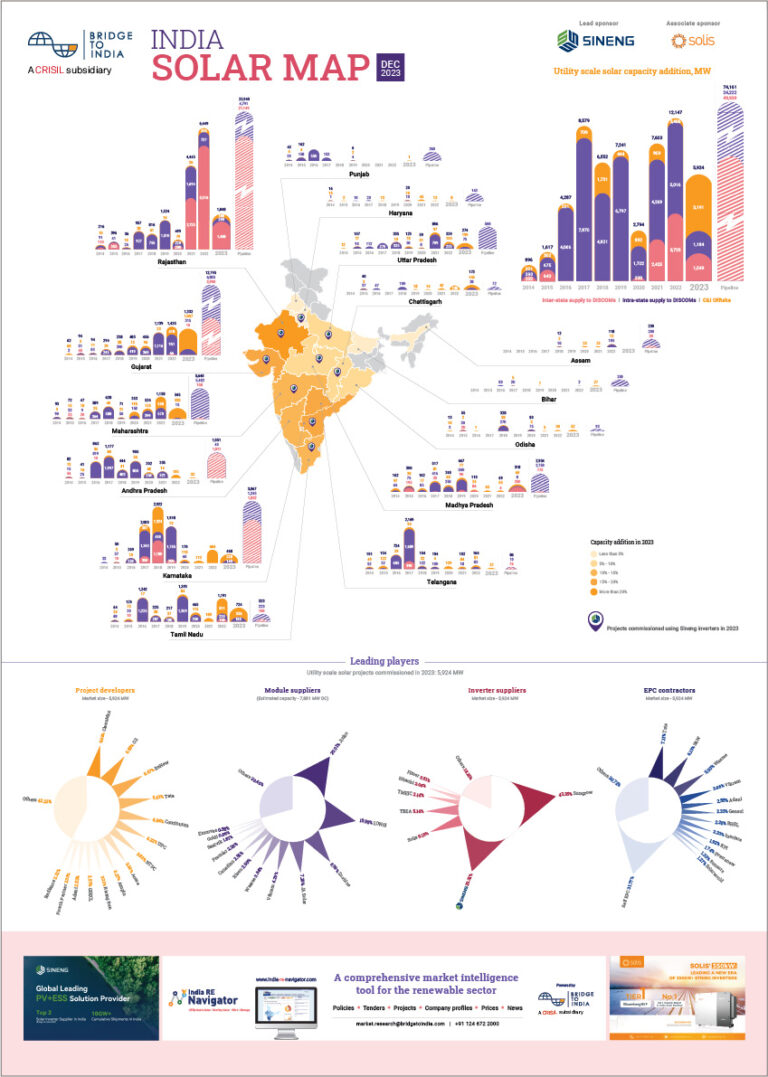The global energy system is in a period of rapid transformation: electricity plays an ever more important role, as do renewables, distributed generation and electric vehicles. Energy efficiency is improving. Emissions are a large and growing concern. New technologies and business models are disrupting and challenging a traditionally risk-averse and slow-moving industry. The International Energy Agency (IEA) has just published its new “Energy Technology Perspectives” outlining the global trends until 2050 (refer). Here are some of the key findings and the implications they might have for India.
- Construction of very large plants, especially nuclear power plants, has come to a halt due to uncertainty about the future power market design
- If carbon were priced at a reasonable rate, both carbon capture and storage (for gas) and renewables would get a major boost
- In India, the market will be driven more by default than design

The Global Context
As energy markets are transforming and countries are working out different supply strategies, this hitherto stable market is becoming much more dynamic and perceived investment risks for infrastructure investors are increasing. This has a profound impact on what they invest into.
Nuclear power suffers most. This energy technology requires the most planning security, because of its technological complexity, the very long planning, construction and operating time and the high capital expenditure. In addition, there are questions around accident insurance and the storage of used radioactive materials that can only be addressed with political support.
As a result, there are hardly any new nuclear plants coming up at the moment. The small number of new plants is offset by retiring old plants (like in Germany), leading to a flat industry growth. In some countries, even new gas and coal projects have been stalled for the same reason. In developed economies, where demand growth is very slow or even receding due to efficiency gains, this leads to an investment paralysis. In fast growing markets, like India, the effects are less strongly felt.
However, it is not only the power markets, but also the carbon markets that are uncertain. At present, there is almost no cost to carbon emissions. As a result, there is hardly any investment into carbon capture and storage (CCS) technologies. For the same reason, over 60% of new coal-fired plants added in the past 10 years were of the highly emissions intensive, inefficient, subcritical kind.
If carbon emissions were priced at $ 100 per ton (as compared to the ridiculously low $ 1 that they are currently traded at), technology choices would change dramatically: according to the IEA, it would then be commercially attractive to add CCS technology to efficient, combined cycle gas turbines (CCGT). Also, this choice would be cheaper than efficient, supercritical pulverized coal-fired power plants with CCS. And renewables, of course, would get a massive push.
Implications for India
There is a fundamental mismatch between the approach of the IEA and the reality in India. This relates to the fact that the IEA views energy as a regulatory game, driven in effect by government’s policy choices (based on market prices for fuels and technologies). In India, however, the government has a mixed record at best in providing power to its citizen and industry and it is unlikely that it will be able to manage a transition to a more complex energy future in the way that e.g. China or Germany are doing. Thus, in a way, uncertainty plays less of a role as the Indian market is used to uncertainty.
A likely scenario is that India becomes one of the leading markets for renewables, especially for solar, in the world by default rather than design. In the absence of policy certainty and in the absence of a government-driven energy strategy, we might well see a privatization of power supply, more distributed solutions, more end-user solutions and, because they neatly fit this kind of market: more renewables.
Tobias Engelmeier is the Founder and Director of BRIDGE TO INDIA












